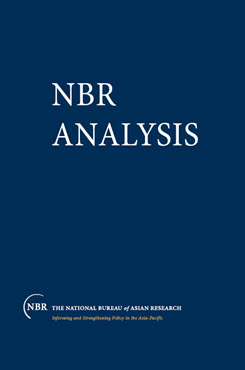Burma/Myanmar
A Guide for the Perplexed?
Myanmar is sometimes described as being under economic stress. However, such stress does not necessarily indicate that the country or the regime is close to collapse.
Myanmar is sometimes described as being under economic stress. For many Burmese this is a euphemism. Stress is indeed ubiquitous—in the villages, among the urban poor, among civil servants, in business, even within the small middle class and ruling military elite—but for diverse reasons. It is most apparent within the organized but nascent political opposition and the indigenous and foreign (ethnic Chinese and Indian) minority groups. However, such stress does not necessarily indicate that the country or the regime is close to collapse.
The description is inadequate; it does not do justice to the depth of concerns pervasive in society. Anxiety, uncertainty, and fear are also prevalent, and are more accurate and penetrating descriptions—anxiety about the future among those close to the center, some of whom speculate about possible, but extremely unlikely, U.S. military action to force “regime change”; uncertainty among businesses subject to the vicissitudes of arbitrarily altered regulations, which undercut a private sector supposedly nurtured since socialism’s demise; and fear among the people as a whole. These heightened emotions are pandemic in Myanmar’s society, in its politics, and in its uncertain future. Economic and political road maps out of this morass have been prepared—by the military, the opposition, the minorities, and even by foreign governments, institutions, and individuals. [1] All are roughly sketched maps into uncharted territory; some are prepared by those who envisage the destination without knowing the terrain.
Because the feasible paths forward are obscured, miscalculations, both internal and external, have characterized much of contemporary Burmese history. Errors of action and perception have clouded policy debates and dialogues. These miscalculations have been compounded by rigidities and orthodoxies by all actors—the military, the political opposition, the minorities, multinational donors, China, Japan, ASEAN, the United States, and India, among others—which have limited consideration of alternatives and retarded settlement of disputes. The prestige and even the legitimacy of key leaders are built on doctrines from which deviation is seen as defeat, an unacceptable humiliation. Yet constitutional reform is necessary for the well–being of the diverse Burmese peoples.
Miscalculations, Rigidities, and Their Vicissitudes
Myanmar has been a catalogue of miscalculations by virtually all parties. The military has committed many mistakes, some planned and some inadvertent, compounding its problems and undercutting its own goals. In spite of brave and bold official assertions of the favorable state of economic growth, careful observers (and even many in government)…
[1] A Thai road map surfaced in July 2003, one from the Ethnic Nationalities Solidarity and Cooperation Committee in September 2003, and even one in August 2003 by the author for an “interim government of national unity.”


